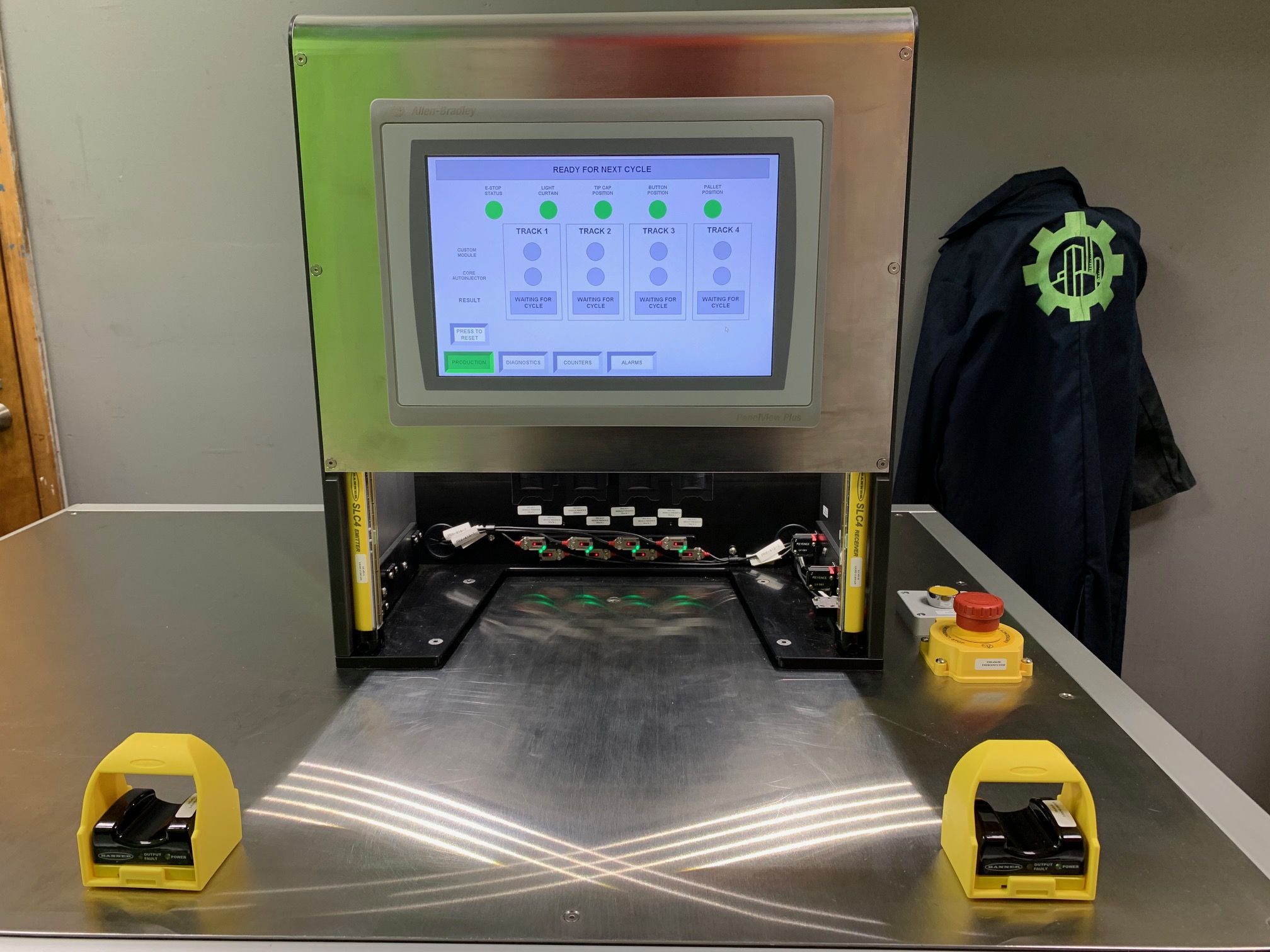Manual, Semi-Automatic, or Fully-Automated Assembly
In today’s market, one of the biggest benefits of custom solutions is that they help mitigate labor shortages and allow you to reallocate resources. Despite changes in the labor pool, the ongoing demand for higher production rates fuels the need for strategic automation.
The global assembly automation market is valued at approximately $14.2 billion and is expected to grow by more than 6.5% by 2026. Manufacturers are under pressure to implement or increase automation to remain competitive.
Investing in custom assembly solutions increases safety in manufacturing or laboratory environments, protecting workers from hazardous substances or processes. Custom assembly solutions also reduce time, increase productivity, and lower costs.
In most cases, automation implementation is an iterative process that requires strategic planning. The first step is to identify areas in which automation will be most beneficial.
PDFact develops custom assembly solutions designed with highly specific considerations in mind including products, work environments, and predetermined goals for automation. It’s important to choose assembly solutions that will quickly improve your processes and ensure a return on investment.
Types of Custom Product Assembly Systems
Manual Assembly Systems
Custom manual assembly systems are endlessly useful because there will always be products, processes, and environments that are not conducive to automation.
Custom equipment can be designed and built to optimize the manual assembly of products at any stage of the process, including testing and inspection. Manual assembly solutions improve the relationship between human operators and machines. Customized solutions are built to improve processes and increase output in specific environments.
Manual assembly systems are the best option when products or complex parts simply aren’t ideal for more advanced automation. Whether it’s due to shape, functionality, or some other complexity, automation may not be relevant or beneficial.
Specially designed custom devices, fixtures, and stations can optimize the manual assembly process, especially in instances of low volume or small-batch manufacturing.
Semi-Automatic Assembly Systems
When it doesn’t make sense to fully automate or when there are capital restrictions, semi-automatic assembly systems are flexible solutions that leave room for continuous improvement.
Semi-automatic assembly systems are widely used, combining the skills of humans with the repetition and reliability of machines. Consistency, productivity, and safety are greatly improved, but operator assistance is still required.
The possibilities for semi-automatic assembly solutions are vast. Custom solutions are built to meet exact specifications while taking into consideration pre-existing systems, machinery, and working environments.
Operators may be required to load and unload systems, or there could be many checkpoints in the process that require operator oversight. In the end, custom assembly solutions depend on the environment in which the products will be assembled and the unique goals you’re trying to achieve.
Fully-Automated Assembly Systems
To date, fully automated systems are leveraged by large-scale manufacturing operations. Capital requirements are significant because of the high levels of complexity and innovative technologies involved.
Fully automated solutions and Industry 4.0 are not just about building smarter machines, they are about implementing technology that enables subsequent data collection and analysis.
The proliferation of fully automated assemblies and other smart manufacturing solutions have demonstrated how digitization and IIoT will influence manufacturing and assembly processes in the future.
Fully automated assembly systems are certainly a key consideration for firms of all sizes, especially as technological innovations become more widely available. It’s worthwhile to consider the ongoing benefits of fully automated assembly like automated feed systems, testing, inspection, packaging, and unloading.
As innovation progresses, greater access to data will lead to optimized assembly systems that collect information about the system as a whole and the parts within.
Reasons to Automate Product Assembly
Every company has its own set of challenges and reasons for automating product assembly. The clear benefit is that automation reduces human involvement in manual functions that are time-consuming and repetitive, freeing them to focus on more complex tasks.
In addition, automated assembly systems are designed to ensure product quality and consistency, in less time. The results are greater predictability, increased productivity, and cost savings. As technology advances, automation solutions are becoming more approachable and effective solutions for achieving specific business goals.
The most compelling reason to automate product assembly is to ensure safety and best practices. Automated solutions can reduce accidents and work injuries with built-in safety technology. In general, automation is widely viewed as a net benefit for employee and worker safety.
Which Type of Assembly System is Right For You?
When it’s time to improve your manual assembly process or introduce automated solutions, PDFact can help you decide which type of assembly system makes the most sense for your goals.
If your assembly processes have low production yields but you want to make them more streamlined and efficient, PDFact can build custom manual assembly equipment that is designed for efficiency in your working environment.
PDFact’s solutions may include stand-alone stations, customized work holding devices for laboratories or manufacturing, and custom assembly equipment that improves pre-existing stations.
There are semi-automatic assembly solutions for low volumes and for instances when it either doesn’t make sense to fully automate or there is some level of complexity that makes it too difficult or impossible to fully automate.
It’s a misconception that full automation is not available for small and medium-sized businesses. In fact, fully automated assembly solutions have become more flexible and affordable in recent years. Despite large initial investments, fully automated assembly solutions quickly increase production rates and improve long-term ROI.
To learn more, contact us today!

